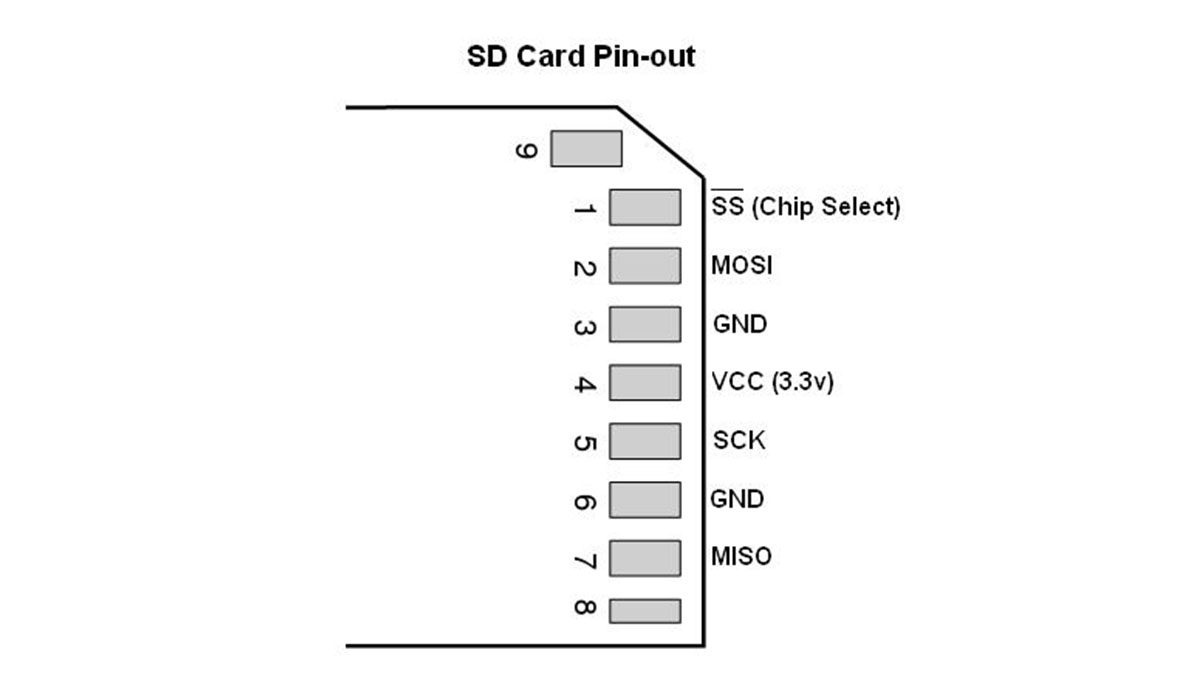Summary of SD/SDHC Card Interfacing with ATmega8 /32 (FAT32 implementation)
This project involves interfacing a microSD card with an AVR microcontroller (ATmega8 or ATmega32) using the SPI bus for embedded systems requiring large memory storage. A 1GB microSD card from SanDisk and others were tested. The design includes a custom breadboard adapter created by soldering a 7-pin breakout header to a microSD card adapter. The system operates at 3.3V powering the microcontroller, microSD, and MAX232 for PC communication. The schematic was optimized by removing series resistors, adding pull-ups, and using zener diodes for voltage protection when programming at 5V levels.
Parts used in the microSD Card Interfacing Project:
- microSD Card (e.g., SanDisk 1GB, transcend cards)
- microSD Card Adapter
- 7-pin Breakout Header
- AVR ATmega8 or ATmega32 Microcontroller
- MAX232 IC
- 3.3V Power Supply
- 51k Pull-up Resistors
- 3.6V Zener Diodes (for voltage protection)
- ISP Programmer (with 3.3V or 5V output)
Here is my project on interfacing of SD Card (microSD). microSD cards are available very cheap nowadays, a great option for having a huge memory in any embedded system project. It is compatible with SPI bus, so the interfacing is easy. SD card adapters are also easily available in market, one can easily make a bread-board adapter by soldering few pins on it. Following figures show the SD card pin-out & the bread-board adapter design by soldering 7-pins of a breakout header on the microSD adapter (Click on images for larger view).
I had started this project with 1GB microSD card from SanDisk (later on tested with transcend cards also). The microcontroller is AVR ATmega8 or ATmega32 running at 8Mhz internal clock. MAX232 is used to interface the circuit with PC for monitoring the data. A 3.3v supply is used for powering the mega8, microSD and max232 (though the specified supply for max232 is 5v, it works comfortably at 3.3v).7 pins of the microSD are used here, shown in the figure of pin-out.
Schematic for ATmega8 is shown here (updated on 10 May 2010, SD series resistors are removed, as they were limiting the speed of SPI bus. 51k pullups are added on CMD/DAT lines. This gives better stability with different cards. Also, two 3.6v zeners are added to protect SD in case when the ISP programmer voltage levels are of 5v. these diodes are not required if your programmer has settings for 3.3v output)
(Note: VCC & GND pins of MAX232 are not shown in the schematic, but they must be connected in the actual hardware)
To continue reading click : SD/SDHC Card Interfacing with ATmega8 /32 (FAT32 implementation)


